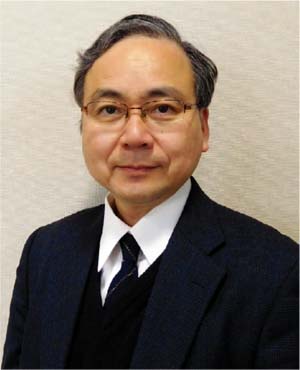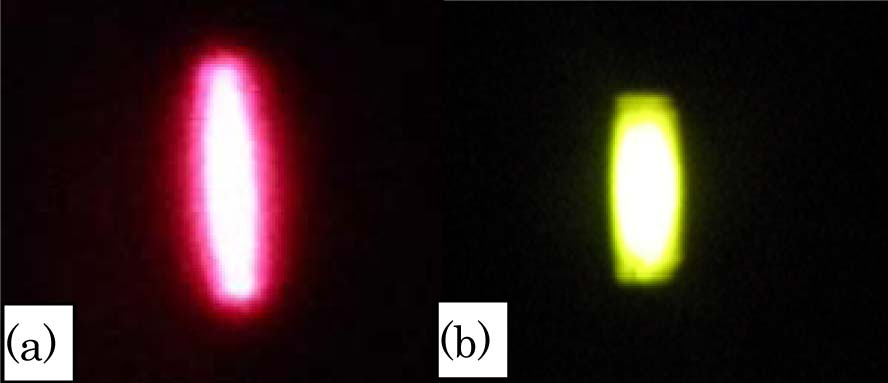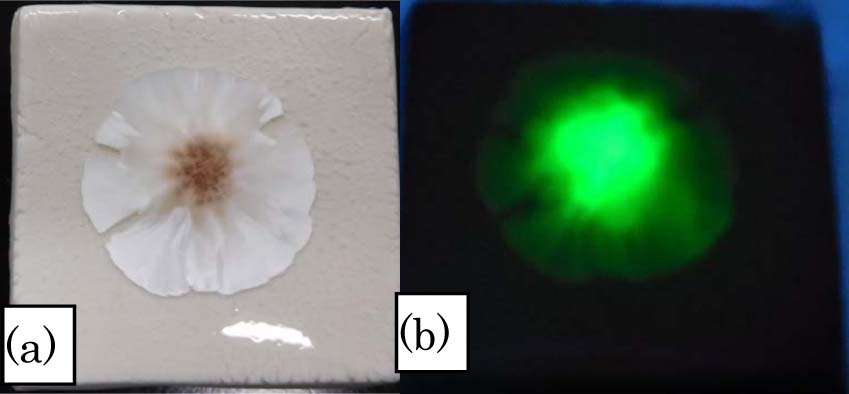|
Advanced Material Chemistry Course Prof. Takanori WATARI E-mail:watarit [at] cc.saga-u.ac.jp (Please replace [at] with @ in e-mail address.) Academic Staff Database |
 |
|
||||||||||||||||||||||||||||||||||||
Research Field : Inorganic material/physical properties
Membership in Academic Societies :
The Ceramic Society of Japan
The Ceramic Society of Japan
 Fabrication and Characterization of Up-Conversion Phosphor
Fabrication and Characterization of Up-Conversion Phosphor
There are two types in the Phosphor material, one is gDown-Conversion(DC)h and the other is gUp-Conversion(UC)h. DC phosphor absorbs the UV light and emits the visible light. UC phosphor absorbs the IR light and emits the visible light. In the laboratory, cheap and harmless ceramic phosphors are investigated. So far we have found the ZnO-TiO2 ceramics with rare earth metals show superior emission characteristics, bright red and green color, as shown in Figure 1. At present time, we investigate the improvement of the emission characteristics and the emission mechanism.
 Development in new decoration methods for ceramic ware
Development in new decoration methods for ceramic ware
Saga prefecture is famous for the Arita porcelain and Karatsu pottery. In laboratory, the new decoration methods of the glass covered on ceramic wares are investigated. We try to glow the crystal, whose position and shape are controlled (Fig.2(a)). Also, The DC phosphor crystals are tried to be grown in the glass (Fig.2(b)).
 |
 |
 |
 |
